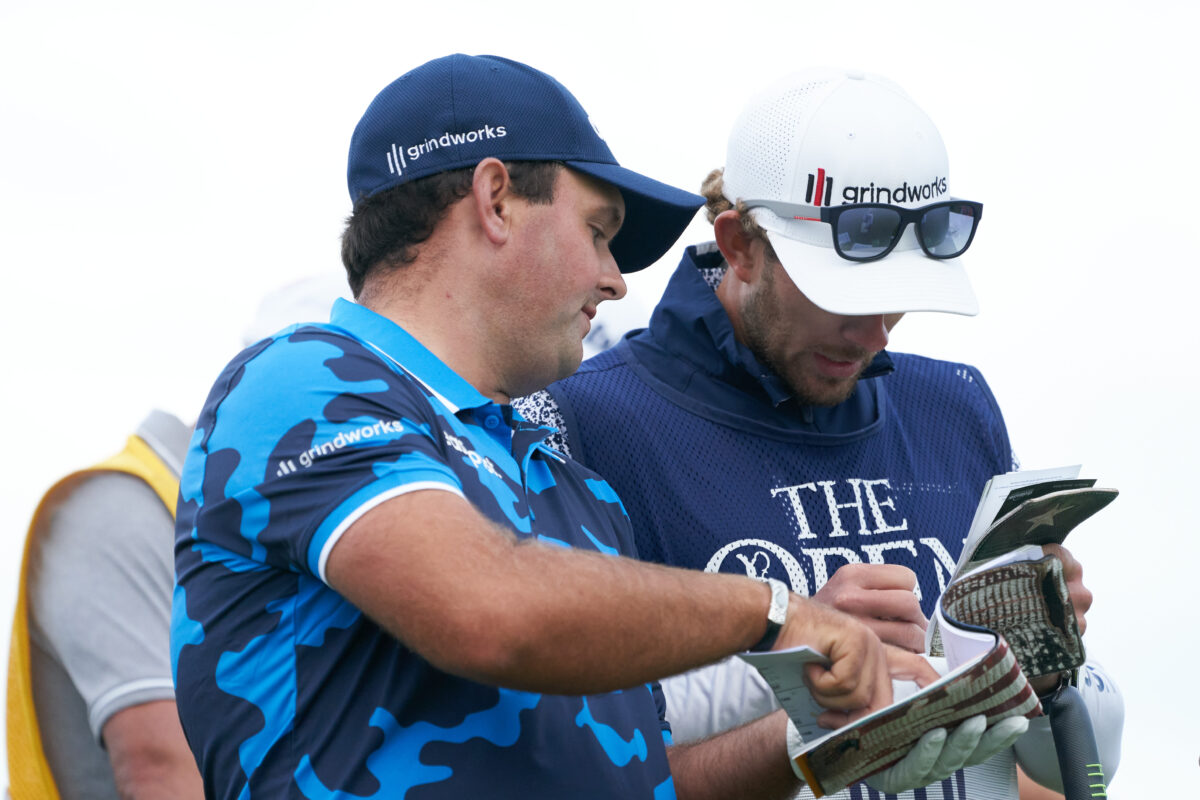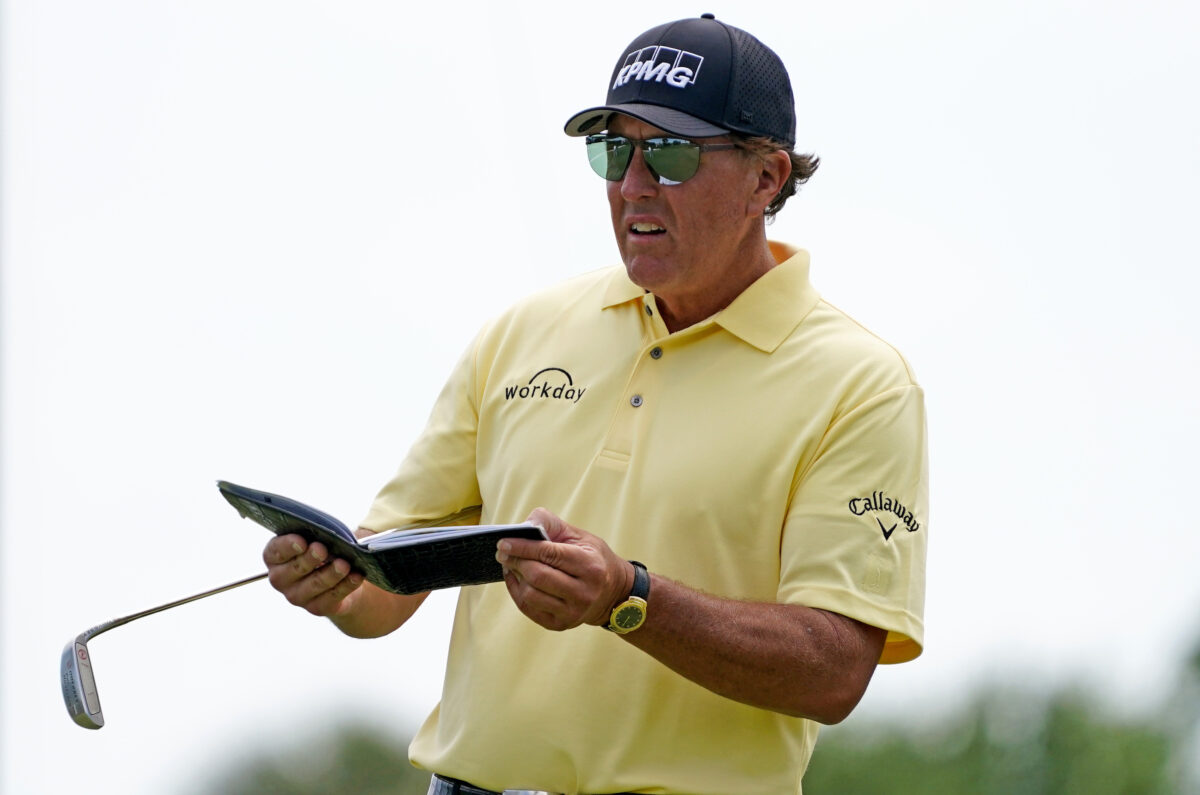Plenty of challenges will confront caddies and players due to the ban of green-reading books on the PGA Tour beginning Thursday in the Sentry Tournament of Champions in Hawaii.
Extra cost for new books. Increased legwork for both caddie and player to try and square the absence of info. Adjusting to the loss of a trusted helping hand.
Add another – the honor code.
We’ll get to that in a minute.
First, the prohibition of the extremely detailed books is a Local Rule, allowed by the U.S. Golf Association and R&A, and was overwhelmingly approved by the PGA Tour players. The books, many players and caddies have said, took away from the skill of reading a green by sight and feel.
“I never had a greens book when I first started on Tour. Now I can tell you a 10-footer is 9 inches out on an 11 Stimpmeter when I’m walking up from the fairway,” Kevin Kisner said. “That’s the part people want to get rid of. Now I need to go and use my feet and my brain instead of letting someone else do my work.”

So, sayonara green-reading books. And all that information that was the result of money and hard work – many caddies and players will tell you, it took long periods of time to make it a skill to use the green-reading books accurately – can’t be summoned once the first tee shot is hit in the first round.
Instead, caddies and players will be given a Tour-approved yardage book at every tournament that will lack a ton of information technology could provide. The familiar information from tee through the green will be in the books. As for the putting surfaces, however, the data relied on in the past will be severely tempered. The shape and depth of a green will be provided in the new books. Small lines and arrows identifying slopes measuring 4.5 percent or more will be there.
As for info on smaller, subtle slopes and other details? Won’t be in there.
“Very detailed information is in those books,” said longtime caddie Scott Sajtinac, current looper for Brandt Snedeker. “And golf at the highest level, there’s such a fine line between making the playoffs and missing your card.
“More information is better, period.”
Now caddies and players will have to gather information without the use of technology, such as levels and lasers. Instead, caddies and players will be rolling golf balls, taking more putts during practice rounds, watching others putt, and trying to get a feel of the green with their eyes and feet.
“I lived a player’s life – I could leave on Tuesday mornings because we have so much information in our books,” veteran caddie Paul Tesori said. “Now with the new rules, I told my wife I’m going to be gone three weeks more (this) year because we need to be at the course on Mondays. I will have a lot more work around to greens to do. A lot more on-course time.”
That’s because any information gathered in the past with the use of technology cannot be transferred into the new books. Repeat: No data can be copied over to the new books.
So, back to the honor code. And this is where it could get dicey.
“I think it will be hard to police, the transfer of stuff from old books,” Sajtinac said. “They are saying golf is a game of integrity and it’s up to you to make the call on what you’re allowed to transfer. I think at some point, guys will transfer notes they shouldn’t. It’s going to happen. I hope it’s rare.”
Veteran caddie Shannon Wallis was a bit more direct: “People have old books, and trying to police not cheating, good luck with that.”
Kisner, another who is as direct as a punch in the face, said he doesn’t expect many guys to “blatantly cheat knowing the rules.”
“But obviously, if I’m standing on a green and the other player continues to look at his book over a putt, we might have to have a conversation,” Kisner said.
And if someone is accused of breaking the rules? PGA Tour officials will have conversations and penalties could ensue.
There will be other conversations, too. Tesori, who has spent 23 years carrying the bag for, among a few others, World Golf Hall of Fame member Vijay Singh and now Webb Simpson, said caddies and players will be challenged when it comes to looking at the old books. In the case of Tesori, that’s hundreds of them.

They will need to ask one question: Where did all the information come from?
“I have notes in my book, like the green is faster from this angle, but I don’t know for sure where I got that,” said Tesori, who’s used the books religiously for the last seven years. “Technically, you need to be 100 percent sure you got it from seeing it or with your feet. Before the yardage books came out, I used to come out here and use something called the BreakMaster, of all things. It’s an electronic leveler. It’s about the size of coffee cup lid. I did all of Augusta’s greens before they banned us from using them. That gave me a lot of information and now I can’t use the information.
“Here’s the hard part? Just using me and Webb as an example. What is Paul Tesori’s line of doubt versus Webb Simpson’s? If I feel like there is a 10 percent chance I got my information in my book from a greens book, I’m not going to use the information. But, if Webb’s like, I feel like you didn’t, so I’m going to use it. What will the caddie do? He’s the boss.”
[lawrence-related id=778184233,778175116,777997453]
Despite the ban, green-reading books will not disappear.
“I can still use them on Mondays, Tuesdays, and Wednesdays. I can even use them in my hotel room on Thursday,” Tesori said. “I can look where the pin is and try and memorize as much as I can, because we can’t transfer the info and we can’t use the books on the golf course during tournaments.
“It will take some time getting used to.”
That you can book.
“Webb got the belly putter taken away from him when they banned them. That affected a few guys. They have taken away using shafts over 46 inches. That will affect a few players. This will affect everyone,” Tesori said.
To what extent?
“I think at the end of the day it will come out as a wash,” Sajtinac said. “Good putters will still be good putters and bad putters will still be bad putters.”
We’ll see.
[mm-video type=playlist id=01es6rjnsp3c84zkm6 player_id=01evcfxp4q8949fs1e image=https://golfweek.usatoday.com/wp-content/plugins/mm-video/images/playlist-icon.png]



